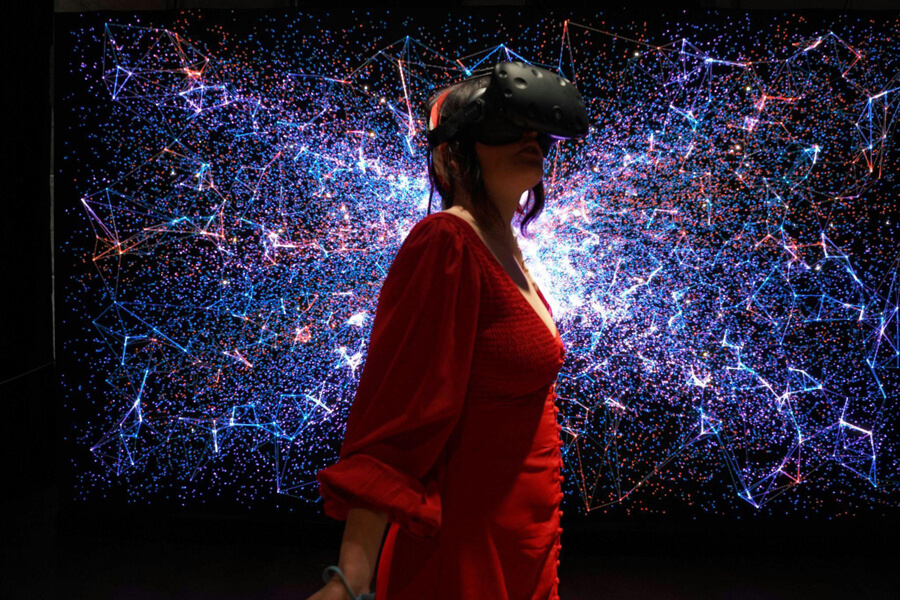Virtual vs Live Games: Comparing the Immersive Experiences
Video games have come a long way from simple 2D arcade games to fully immersive virtual reality worlds that transport players into fantastical realms. Both virtual reality (VR) and augmented reality (AR) games strive to create a deeply immersive experience by making players feel like they have stepped inside the game. However, live action games can be just as immersive in the right circumstances.
Some live action games, like LARP games, allow players to physically act out fantasy adventures together in shared physical spaces. Both virtual games and LARPs aim to immerse players, but they create that immersion in very different ways. Other live games, such as live poker tournaments, immerse players because of the nature of the game.

Deep Immersion Through Visuals and Sounds
Virtual reality games excel at surrounding players with stimulating sensory environments that react to their movements. Players wear VR headsets that take over their entire field of vision with the game visuals. As they turn their head, the visuals sync and update accordingly to create a seamless 360-degree view of the virtual world. Directional 3D audio also reacts to players’ head orientation and movements through the game space, enhancing the realism.
Games like Half-Life: Alyx grab players’ attention with finely detailed interactive environments and dynamic lighting effects. The engrossing sights and sounds of lush alien vistas or foreboding darkness in virtual worlds make it easy for players to feel fully transported.
AR games like Pokémon GO also immerse players visually by overlaying digital imagery and information onto real-world views. Players see Pokémon pop up in parks or neighborhoods overlaid onto views from their phone cameras. The visual combination of digital fantasies blended into physical spaces creates an engaging hybrid experience bridging virtual and real worlds. However, players are still clearly looking at a smartphone screen rather than feeling surrounded. So, AR experiences are a step below VR in creating complete immersion that cuts off real-world stimuli.
The Excitement of Live Casino Games
Live casino games have evolved table and card classics into thrillingly immersive encounters that bridge the physical and online worlds. Players see friendly human dealers in studios dealing out cards or spinning roulette wheels in real-time HD video streams. Interactive features allow chatting with the dealer and other players, creating a social atmosphere like an in-person casino VIP room. Wagering, game play mechanics, and winning payouts mirror what happens at on-location tables.
With multi-camera views, players watch cards being shuffled and dealt up close or scenic wheel spins while also seeing dealers smile, laugh, and converse. The personalized interactions make every hand or spin feel more impactful and sociable than random number generators. Canada is known for its vibrant gaming community and now offers a thrilling online casino experience like no other. From the bustling streets of Vancouver to the charming landscapes of Nova Scotia, online casinos in Canada offer a diverse selection of games that cater to every preference and review platforms like onlinecasino.ca will help you discover the best casinos online for live games.
Side bet challenges and bonuses like custom prizes further immerse players in activities beyond core game rules. It feels like an exclusive gaming event rather than solitary online play.
Live casinos expertly fuse physical reality with remote access, providing authentic atmospheres filled with human connections absent from standard internet gambling. The technology shrinks distances so any player can transport into posh casino VIP rooms for one-of-a-kind immersive gaming getaways at home.
Shared Physical Immersion
LARP games take the opposite approach by avoiding digital visuals and sounds and instead focusing on transforming shared physical spaces into fantasy settings. Players physically act out character roles together while coordinating imaginative storytelling fueled by collaborative improvisation. Wearing costumes and wielding prop weapons like foam swords, they roleplay fantastical adventures by acting in character and speaking lines. The events transform conference centers or outdoor areas into mystical kingdoms or post-apocalyptic wastelands where creative stories come alive.
Natural Interactions
The latest VR systems allow quite advanced full-body motion tracking so players can use natural movements to interact in virtual worlds. For example, with the meta Quest 2, players can duck behind barricades, aim and fire weapons with realistic gestures, or even execute martial arts moves that trigger effects in-game. Hand controllers also provide great dexterity for fine interactions like manipulating virtual objects. This level of freedom and embodied interaction creates amazingly intuitive experiences where players feel truly integrated into game environments.
Ultimate Immersive Potential
Both virtual games and live games provide means for players to feel transported to other worlds, and in the case of live-action casino games, immersed in the game. Striving for immersion has always been at the core of game design. Virtual reality has recently reached new heights in visually and audibly immersive experiences aided by advanced motion tracking.
Hybrid experiences are also emerging, such as VR chat spaces allowing costumed players to jointly improvise. And location-based AR games like Pokémon GO already overlay virtual elements onto real spaces in innovative ways. Blending the visual immersion of virtual worlds with the physicality of LARPs could produce unprecedented levels of immersion.
The ultimate immersive experience would likely incorporate the best aspects of both virtual and real environments. Players could jointly explore wondrous virtual settings while also feeling free to physically act out performances. This hybrid approach would merge shared social experiences and virtual stimulation with embodied interactions. As technology advances further, these could become reality and take immersive games into exciting new territory.
🔙 Back to Articles list.